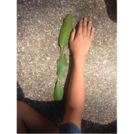
Students will use leaves to measure different plants in and around the garden.
- Subject:
- Mathematics
- Material Type:
- Lesson Plan
- Author:
- rgothaii@rgdeuceenterprises.com
- Date Added:
- 07/22/2021

Students will use leaves to measure different plants in and around the garden.
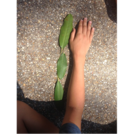
In this lesson, students will use leaves to measure different plants in and around the garden.
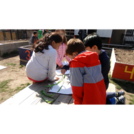
In this lesson, students will measure spaces in the outdoor classroom in metric units recorded as decimals and compare the measurements.
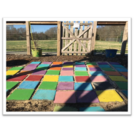
In this lesson, students will measure spaces in the outdoor classroom in metric units recorded as decimals and compare the measurements.
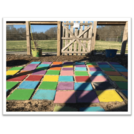
In this lesson, students will measure spaces in the outdoor classroom in metric units recorded as decimals and compare the measurements.

Modeling, Functions, and Graphs covers the content of a typical college algebra course with an emphasis on functions and modeling; when combined with a trigonometry text or supplement, this text can be used in a precalculus course.
The text employs a variety of applications to motivate mathematical thinking. Each chapter opens with a problem of historical or contemporary significance highlighting the material in the chapter, and includes by an Investigation that previews the skills to be introduced. These Investigations can be used in class as guided explorations or as projects for small groups. We have also provided a set of more challenging Projects at the end of each chapter.

This text is for an introductory level probability and statistics course with an intermediate algebra prerequisite. The focus of the text follows the American Statistical Association’s Guidelines for Assessment and Instruction in Statistics Education (GAISE). Software examples provided for Microsoft Excel, TI-84 & TI-89 calculators. A formula packet and pdf version of the text are available on the website http://mostlyharmlessstatistics.com. Students new to probability and statistics are sure to benefit from this fully ADA accessible and relevant textbook. The examples resonate with everyday life, the text is approachable, and has a conversational tone to provide an inclusive and easy to read format for students.

This book covers the standard material for a one-semester course in multivariable calculus. The topics include curves, differentiability and partial derivatives, multiple integrals, vector fields, line and surface integrals, and the theorems of Green, Stokes, and Gauss. Roughly speaking the book is organized into three main parts corresponding to the type of function being studied: vector-valued functions of one variable, real-valued functions of many variables, and finally the general case of vector-valued functions of many variables. As is always the case, the most productive way for students to learn is by doing problems, and the book is written to get to the exercises as quickly as possible. The presentation is geared towards students who enjoy learning mathematics for its own sake. As a result, there is a priority placed on understanding why things are true and a recognition that, when details are sketched or omitted, that should be acknowledged. Otherwise the level of rigor is fairly normal. Matrices are introduced and used freely. Prior experience with linear algebra is helpful, but not required.

My Math GPS: Elementary Algebra Guided Problem Solving is a textbook that aligns to the CUNY Elementary Algebra Learning Objectives that are tested on the CUNY Elementary Algebra Final Exam (CEAFE). This book contextualizes arithmetic skills into Elementary Algebra content using a problem-solving pedagogy. Classroom assessments and online homework are available from the authors.

Short Description:
Return to milneopentextbooks.org to download PDF and other versions of this textNewParaNatural Resources Biometrics begins with a review of descriptive statistics, estimation, and hypothesis testing. The following chapters cover one- and two-way analysis of variance (ANOVA), including multiple comparison methods and interaction assessment, with a strong emphasis on application and interpretation. Simple and multiple linear regressions in a natural resource setting are covered in the next chapters, focusing on correlation, model fitting, residual analysis, and confidence and prediction intervals. The final chapters cover growth and yield models, volume and biomass equations, site index curves, competition indices, importance values, and measures of species diversity, association, and community similarity.
Long Description:
Natural Resources Biometrics begins with a review of descriptive statistics, estimation, and hypothesis testing. The following chapters cover one- and two-way analysis of variance (ANOVA), including multiple comparison methods and interaction assessment, with a strong emphasis on application and interpretation. Simple and multiple linear regressions in a natural resource setting are covered in the next chapters, focusing on correlation, model fitting, residual analysis, and confidence and prediction intervals. The final chapters cover growth and yield models, volume and biomass equations, site index curves, competition indices, importance values, and measures of species diversity, association, and community similarity.
Word Count: 52267
ISBN: 978-1-942341-17-8
(Note: This resource's metadata has been created automatically by reformatting and/or combining the information that the author initially provided as part of a bulk import process.)

Students learn about two-axis rotations, and specifically how to rotate objects both physically and mentally about two axes. A two-axis rotation is a rotation of an object about a combination of x, y or z-axes, as opposed to a single-axis rotation, which is about a single x, y or z-axis. Students practice drawing two-axis rotations through an exercise using simple cube blocks to create shapes, and then drawing on triangle-dot paper the shapes from various x-, y- and z-axis rotation perspectives. They use the right-hand rule to explore the rotations of objects. A worksheet is provided. This activity is part of a multi-activity series towards improving spatial visualization skills. At activity end, students re-take the 12-question quiz they took in the associated lesson (before conducting four associated activities) to measure how their spatial visualizations skills improved.

Students will be able to demonstrate the ability to use a variety of non-standard unit of measurements to measure the length of different objects around the outdoor classroom.Math in the REAL world: Nonstandard MeasurementIt is important to give first graders lots of opportunities to practice measuring with both standard and non-standard units of measurement.
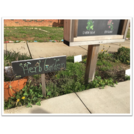
In this lesson the students will be able to demonstrate the ability to use a variety of non-standard unit of measurements to measure the length of different objects around the outdoor classroom.
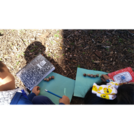
Students will be able to demonstrate the ability to use a variety of non-standard unit of measurements to measure the length of different objects around the outdoor classroom.
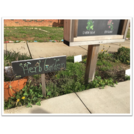
In this, students will be able to demonstrate the ability to use a variety of non-standard units of measurements to measure the length of different objects around the outdoor classroom.

A first one-semester course on differential equations aimed at engineers.

In this book we discuss several numerical methods for solving ordinary differential equations. We emphasize the aspects that play an important role in practical problems. We confine ourselves to ordinary differential equations with the exception of the last chapter in which we discuss the heat equation, a parabolic partial differential equation. The techniques discussed in the intro-ductory chapters, for instance interpolation, numerical quadrature and the solution to nonlinear equations, may also be used outside the context of differential equations. They have been in-cluded to make the book self-contained as far as the numerical aspects are concerned. Chapters, sections and exercises marked with a * are not part of the Delft Institutional Package.
The numerical examples in this book were implemented in Matlab, but also Python or any other programming language could be used. A list of references to background knowledge and related literature can be found at the end of this book. Extra information about this course can be found at http://NMODE.ewi.tudelft.nl, among which old exams, answers to the exercises, and a link to an online education platform. We thank Matthias Moller for his thorough reading of the draft of this book and his helpful suggestions.

OpenIntro Statistics is a dynamic take on the traditional curriculum, being successfully used at Community Colleges to the Ivy League

The Open Logic Text is an open textbook on mathematical logic aimed at a non-mathematical audience, intended for advanced logic courses as taught in many philosophy departments. It is open-source: you can download the LaTeX code. It is open: you’re free to change it whichever way you like, and share your changes. It is collaborative: a team of people is working on it, using the GitHub platform, and we welcome contributions and feedback. And it is written with configurability in mind.

Open Resources for Community College Algebra (ORCCA) is an open-source, openly-licensed textbook package (eBook, print, and online homework) for basic and intermediate algebra. At Portland Community College, Part 1 is used in MTH 60, Part 2 is used in MTH 65, and Part 3 is used in MTH 95.